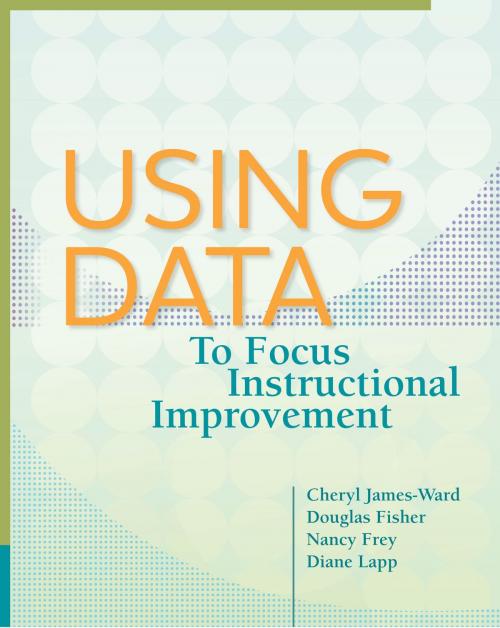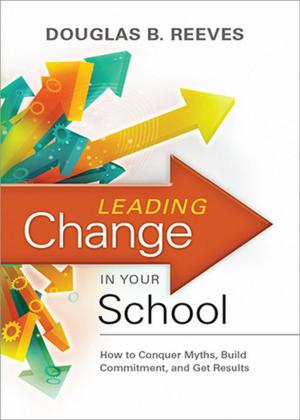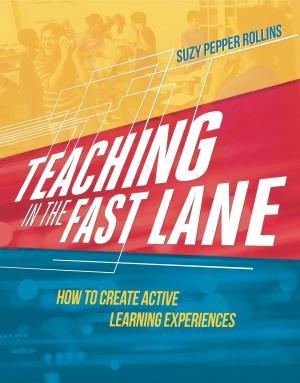Using Data to Focus Instructional Improvement
Nonfiction, Reference & Language, Education & Teaching| Author: | Cheryl James-Ward, Douglas Fisher, Nancy Frey, Diane Lapp | ISBN: | 9781416615583 |
| Publisher: | ASCD | Publication: | February 6, 2013 |
| Imprint: | ASCD | Language: | English |
| Author: | Cheryl James-Ward, Douglas Fisher, Nancy Frey, Diane Lapp |
| ISBN: | 9781416615583 |
| Publisher: | ASCD |
| Publication: | February 6, 2013 |
| Imprint: | ASCD |
| Language: | English |
Data. Does the word make you cringe? Does it evoke feelings of guilt? Are you unsure how to distill it and use it effectively? Grab this book and learn how to empower yourself and your school community with information gleaned from your school’s data. Experienced educators and authors offer simple instructions that can help focus school improvement efforts and result in increasing teacher expertise—a factor that positively affects the quality of life for students long after they have left the classroom. Accepting responsibility for such far-reaching influence requires educators to adopt instructional improvement as a standard by which a school needs to operate and as a means to collaborate and interact with one another. More than that, though, instructional improvement is an important component of successful schools. Learn how to improve instruction by * Collecting the right data—the right way. * Incorporating relevant data into everyone’s daily life. * Resisting the impulse to set brand-new goals every year. * Never settling for “good enough.” * Anticipating changes—big and small, local and federal. * Collaborating and avoiding privatized practice. * Involving all stakeholders in identifying problems, setting goals, and analyzing data. * Agreeing on what constitutes high-quality instruction and feedback. The challenge is to understand that data—not intuition or anecdotal reports—are tools to be used in getting better at teaching students. And teaching students effectively is what schools are all about. Following the guidance in this book, overcome uncertainty and concerns about data as you learn to collect and analyze both soft and hard data and use their secrets for instructional improvement in your school. Data. Does the word make you cringe? Does it evoke feelings of guilt? Are you unsure how to distill it and use it effectively? Grab this book and learn how to empower yourself and your school community with information gleaned from your school’s data. Experienced educators and authors offer simple instructions that can help focus school improvement efforts and result in increasing teacher expertise—a factor that positively affects the quality of life for students long after they have left the classroom. Accepting responsibility for such far-reaching influence requires educators to adopt instructional improvement as a standard by which a school needs to operate and as a means to collaborate and interact with one another. More than that, though, instructional improvement is an important component of successful schools. Learn how to improve instruction by * Collecting the right data—the right way. * Incorporating relevant data into everyone’s daily life. * Resisting the impulse to set brand-new goals every year. * Never settling for “good enough.” * Anticipating changes—big and small, local and federal. * Collaborating and avoiding privatized practice. * Involving all stakeholders in identifying problems, setting goals, and analyzing data. * Agreeing on what constitutes high-quality instruction and feedback. The challenge is to understand that data—not intuition or anecdotal reports—are tools to be used in getting better at teaching students. And teaching students effectively is what schools are all about. Following the guidance in this book, overcome uncertainty and concerns about data as you learn to collect and analyze both soft and hard data and use their secrets for instructional improvement in your school.
Data. Does the word make you cringe? Does it evoke feelings of guilt? Are you unsure how to distill it and use it effectively? Grab this book and learn how to empower yourself and your school community with information gleaned from your school’s data. Experienced educators and authors offer simple instructions that can help focus school improvement efforts and result in increasing teacher expertise—a factor that positively affects the quality of life for students long after they have left the classroom. Accepting responsibility for such far-reaching influence requires educators to adopt instructional improvement as a standard by which a school needs to operate and as a means to collaborate and interact with one another. More than that, though, instructional improvement is an important component of successful schools. Learn how to improve instruction by * Collecting the right data—the right way. * Incorporating relevant data into everyone’s daily life. * Resisting the impulse to set brand-new goals every year. * Never settling for “good enough.” * Anticipating changes—big and small, local and federal. * Collaborating and avoiding privatized practice. * Involving all stakeholders in identifying problems, setting goals, and analyzing data. * Agreeing on what constitutes high-quality instruction and feedback. The challenge is to understand that data—not intuition or anecdotal reports—are tools to be used in getting better at teaching students. And teaching students effectively is what schools are all about. Following the guidance in this book, overcome uncertainty and concerns about data as you learn to collect and analyze both soft and hard data and use their secrets for instructional improvement in your school. Data. Does the word make you cringe? Does it evoke feelings of guilt? Are you unsure how to distill it and use it effectively? Grab this book and learn how to empower yourself and your school community with information gleaned from your school’s data. Experienced educators and authors offer simple instructions that can help focus school improvement efforts and result in increasing teacher expertise—a factor that positively affects the quality of life for students long after they have left the classroom. Accepting responsibility for such far-reaching influence requires educators to adopt instructional improvement as a standard by which a school needs to operate and as a means to collaborate and interact with one another. More than that, though, instructional improvement is an important component of successful schools. Learn how to improve instruction by * Collecting the right data—the right way. * Incorporating relevant data into everyone’s daily life. * Resisting the impulse to set brand-new goals every year. * Never settling for “good enough.” * Anticipating changes—big and small, local and federal. * Collaborating and avoiding privatized practice. * Involving all stakeholders in identifying problems, setting goals, and analyzing data. * Agreeing on what constitutes high-quality instruction and feedback. The challenge is to understand that data—not intuition or anecdotal reports—are tools to be used in getting better at teaching students. And teaching students effectively is what schools are all about. Following the guidance in this book, overcome uncertainty and concerns about data as you learn to collect and analyze both soft and hard data and use their secrets for instructional improvement in your school.















